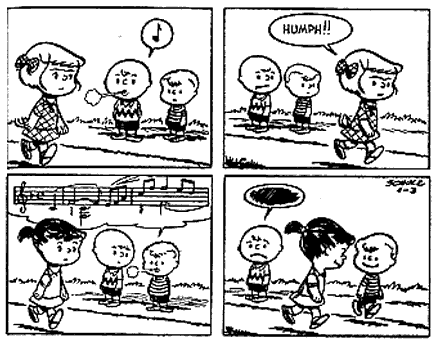
I’ve been on another obsessive Peanuts-reading tear. If you’re interested in listening in to the conversations of one of the greatest geniuses of the 20th century, I highly recommend Charles M. Schulz: Conversations. Particularly wonderful is the 100+ page interview with Gary Groth from 1997 that ran in the Comics Journal.
Two things that strike me right this second about the strip.
First, I’ve been thinking about the difference between reading comics in serialized form — in newspapers or seperately published editions over time — and reading them in book form. Schultz himself said that comics strips weren’t art because they were “too transient” to appeal to several generations. But the act of collecting Peanuts into books, or “treasuries,” basically has cemented their status as great art. Because the characters are so strong, and the world is so static over time, Peanuts is an epic of gag strips — in book form, it really does amount to what George Saunders called a “50-year novel.”
Second, I’ve been thinking about the way in which Schultz’s drawing led his ideas. His formal innovations with his drawing — dressing Snoopy up as a fighter pilot, for instance — led to his character and story development.
Take the character of Schroeder. Schultz said:
“I was looking through this book on music, and it showed a portion of Beethoven’s Ninth in it, so I drew a cartoon of Charlie Brown singing this. I thought it looked kind of neat, showing these complicated notes coming out of the mouth of this comic-strip character, and I thought about it some more, and then I thought, ‘Why not have one of the little kids play a toy piano?'” (*)
Schultz made sure to recreate exactly those Beethoven musical scores by hand, and it was the act of drawing — the simple aesthetic pleasure of musical notes in a comic strip — that led to Schroeder.
What this means to me is that drawing comics is its own particular brand of alchemy. You can’t just sit down and say, “I’m going to draw a character with a funny nose who has no father and always trips over his shoelaces.” The description means nothing. You have to draw that character into existance.
It’s the act, not the idea.

[…] A few more thoughts about the book. […]